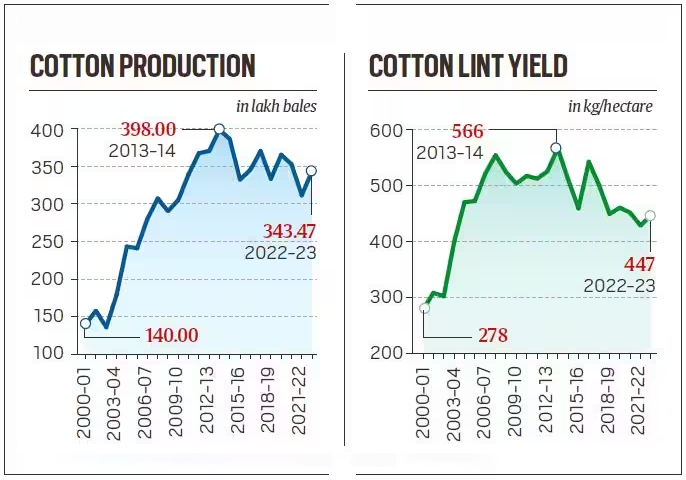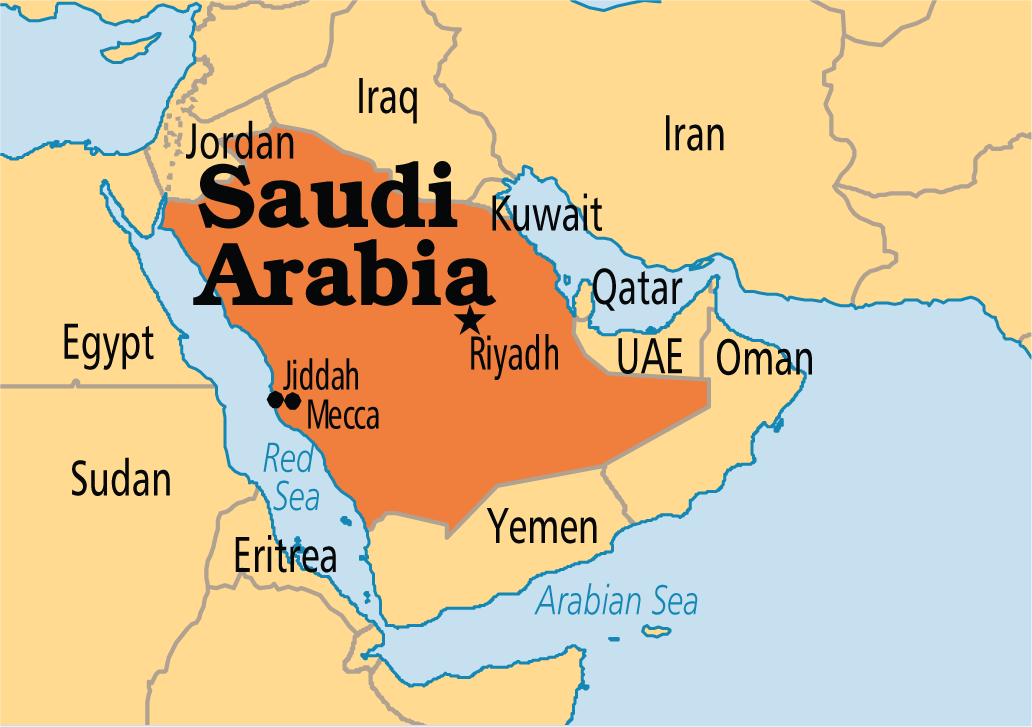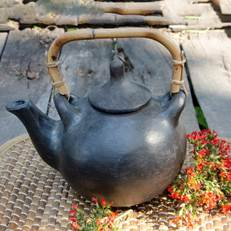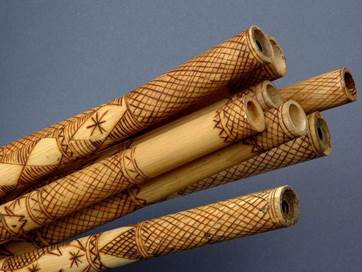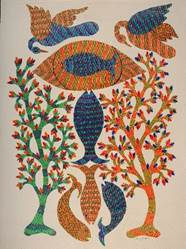Infographics
Indian Economy
Cotton Production in India
For Prelims: Cotton, Bt (Bacillus thuringiensis) technology, Pink bollworm, Genetically-modified crops, PBKnot, SPLAT-PBW,
For Mains: Significance of Cotton for India, Reason Associated with Subsequent Decline in Cotton Production in India.
Why in News?
Cotton is a versatile crop that provides food, feed, and fiber for various uses, including textiles, cooking oil, and livestock feed. It is also a major source of income and employment for millions of farmers in India.
- However, in recent years, cotton production and yields have declined significantly, posing a challenge for the country’s agriculture and textile sectors.
What is the Significance of Cotton for India?
- About:
- Cotton is one of the most important commercial crops cultivated in India and accounts for around 25% of the total global cotton production.
- Due to its economic importance in India, it is also termed as “White-Gold”.
- In India, around 67% of India’s cotton is grown on rain-fed areas and 33% on irrigated areas.
- Cotton is one of the most important commercial crops cultivated in India and accounts for around 25% of the total global cotton production.
- Growing Conditions:
- Cotton cultivation necessitates a hot, and sunny climate with a long frost-free period. It is most productive in warm and humid climatic conditions.
- Cotton can be successfully grown in a range of soil types, including well-drained deep alluvial soils in northern regions, variable-depth black clayey soils in the central region, and mixed black and red soils in the southern zone.
- While cotton exhibits some tolerance to salinity, it is highly sensitive to waterlogging, emphasizing the importance of well-drained soils in cotton farming.
- Species of Cultivated Cotton:
- India is the country to grow all four species of cultivated cotton Gossypium arboreum and Herbaceum (Asian cotton), G.barbadense (Egyptian cotton) and G. hirsutum (American Upland cotton).
- Majority of the cotton production comes from ten major cotton growing states, which are grouped into three diverse agro-ecological zones, as under:
- Northern Zone: Punjab, Haryana and Rajasthan
- Central Zone: Gujarat, Maharashtra and Madhya Pradesh
- Southern Zone: Telangana, Andhra Pradesh, Karnataka and Tamil Nadu
- Significance:
- Cotton, often likened to coconut, serves as a source of three essential components:
- Fiber: The white fluffy fiber or lint, constituting about 36% of the raw unginned cotton, is the primary source for the textile industry. The rest is seed (62%) and wastes (2%) separated from the lint during ginning.
- Cotton commands a two-thirds share in India's total textile fiber consumption.
- Food: Cottonseed contains 13% oil, which is commonly used for cooking and frying.
- Cottonseed cake/meal is India's second-largest feed cake, following soybean.
- Feed: The leftover cottonseed cake, comprising 85% of the seed, is a valuable, protein-rich feed ingredient for livestock and poultry.
- Cottonseed oil ranks as the country's third-largest domestically-produced vegetable oil, following mustard and soybean.
- Fiber: The white fluffy fiber or lint, constituting about 36% of the raw unginned cotton, is the primary source for the textile industry. The rest is seed (62%) and wastes (2%) separated from the lint during ginning.
- Cotton, often likened to coconut, serves as a source of three essential components:
What led to Rapid Increase and Subsequent Decline in Cotton Production in India?
- Surge:
- Between 2000-01 and 2013-14, India witnessed a remarkable surge in cotton production, primarily attributed to Bt (Bacillus thuringiensis) technology. Key developments include:
- Adoption of genetically-modified (GM) cotton hybrids with Bt genes, designed to combat the American bollworm insect pest.
- It led to a surge in lint yields from 278 kg per hectare in 2000-01 to 566 kg per hectare in 2013-14.
- A corresponding increase in cottonseed oil and cake production.
- However, the gains achieved through Bt technology were short-lived. Post-2013-14, cotton production and yields began to decline.
- Between 2000-01 and 2013-14, India witnessed a remarkable surge in cotton production, primarily attributed to Bt (Bacillus thuringiensis) technology. Key developments include:
- Decline:
- The primary factor responsible for decline was the emergence of the pink bollworm (Pectinophora gossypiella).
- When pink bollworm(PBW) larvae invade cotton bolls, it causes cotton plants to produce less cotton and the cotton produced is of lower quality.
- Unlike the polyphagous American bollworm, PBW is monophagous, feeding mainly on cotton, which contributed to the development of resistance against Bt proteins.
- Continuous cultivation of Bt hybrids led to PBW populations developing resistance, replacing susceptible ones.
- In 2014, Gujarat experienced an unusual surge in PBW larvae survival on cotton flowers 60-70 days after planting. In 2015, Andhra Pradesh, Telangana, and Maharashtra also reported PBW infestations.
- In 2021, even Punjab, Haryana and northern Rajasthan saw heavy infestation of the pest for the first time.
- The primary factor responsible for decline was the emergence of the pink bollworm (Pectinophora gossypiella).
Note: Monophagous means an organism that primarily feeds on a single specific type of food or host.
- Current Methods Employed to Manage the PBW Pest:
- Traditional insecticides had limited success in controlling PBW larvae. Instead, a different method called "mating disruption" has been used.
- It entails the use of Gossyplure, a pheromone signaling chemical that is secreted by female PBW moths to attract male adults. In this case, the pheromone is artificially synthesised and filled into pipes or lures.
- This method hinders male moths from locating females and engaging in mating, thereby causing disruption in their reproductive cycle.
- It entails the use of Gossyplure, a pheromone signaling chemical that is secreted by female PBW moths to attract male adults. In this case, the pheromone is artificially synthesised and filled into pipes or lures.
- There are two approved products for mating disruptions:
- PBKnot, which uses ropes with these chemicals on cotton plants to reduce infestation and boost yields.
- SPLAT-PBW, which is a special emulsion that disrupts PBW mating with synthetic chemicals.
- Traditional insecticides had limited success in controlling PBW larvae. Instead, a different method called "mating disruption" has been used.
What are the Other Issues Associated with the Cotton Sector in India?
- Yield Fluctuations: Cotton production in India can be quite unpredictable due to several factors.
- Limited access to irrigation systems, declining soil fertility, and erratic weather patterns, including unexpected droughts or excessive rainfall, contribute to the uncertainty surrounding cotton yields.
- Smallholder Dominance: The majority of cotton farming in India is carried out by small-scale farmers.
- These farmers often rely on traditional agricultural practices and have limited access to modern farming technologies, which in turn affects overall cotton production.
- Limited Market Access: A significant number of cotton growers in India face constraints in reaching markets and are compelled to sell their harvest at reduced rates to intermediaries.
Way Forward
- Integrated Pest Management: There is a need to advocate for integrated pest management (IPM) strategies that combine natural controls, trap crops, and beneficial insects to reduce pesticide dependency while effectively managing pests.
- Community-Based Seed Banks: Establishing seed banks at the community level to conserve and share traditional cotton seed varieties, preserving genetic diversity and promoting higher-yielding strains.
- Market Linkage Platforms: Establishing digital platforms that directly connect cotton farmers with buyers and textile manufacturers, reducing middlemen involvement and ensuring fair pricing.
- Value Addition Through Local Processing: Promoting value addition by establishing local cotton processing units that can gin, clean, and process cotton fiber, creating employment opportunities and adding value to the cotton supply chain.
UPSC Civil Services Examination Previous Year Question (PYQ)
Prelims
Q1. The black cotton soil of India has been formed due to the weathering of (2021)
(a) brown forest soil
(b) fissure volcanic rock
(c) granite and schist
(d) shale and limestone
Ans: (b)
Q2. A state in India has the following characteristics: (2011)
- Its northern part is arid and semi-arid.
- Its central part produces cotton.
- Cultivation of cash crops is predominant over food crops.
Which one of the following states has all of the above characteristics?
(a) Andhra Pradesh
(b) Gujarat
(c) Karnataka
(d) Tamil Nadu
Ans: (b)
Mains
Q. Analyze the factors for the highly decentralized cotton textile industry in India.


International Relations
Strengthening India-Saudi Arabia Strategic Partnership
For Prelims: West Coast Refinery Project, India-Middle East-Europe Economic Corridor, India-Saudi Strategic Partnership Council (SPC)
For Mains: India- Saudi Arabia Relations, Significance of the India-Middle East-Europe Economic Corridor in the context of India's economic and strategic interests
Why in News?
Recently, after the launch of the India-Middle East-Europe Economic Corridor, the Prime Minister(PM) of India welcomed the Crown Prince of Saudi Arabia on a state visit.
- During this significant visit, the two nations discussed various aspects of their strategic partnership and agreed to set up a joint task force to expedite the West Coast refinery project.
What were the Outcomes and Agreements Resulting From the Visit?
- Strategic Partnership Acknowledgment:
- The PM of India highlighted Saudi Arabia's pivotal role as "one of the most important strategic partners of India."
- Both leaders emphasized the importance of their partnership, particularly as two rapidly growing nations contributing to regional stability.
- India-Saudi Strategic Partnership Council (SPC):
- The PM of India and the Crown Prince of Saudi Arabia co-chaired the inaugural meeting of the India-Saudi Strategic Partnership Council (SPC).
- Discussions covered a wide range of areas, including defence, energy, security, education, technology, transportation, healthcare, tourism, culture, space, and semiconductors.
- This reflects the comprehensive nature of the economic cooperation between India and Saudi Arabia.
- West Coast Refinery Project Acceleration:
- This trilateral project, involving ARAMCO(oil company of Saudi Arabia), ADNOC(oil company of the United Arab Emirates) and Indian Companies, is set to receive a USD 50 billion investment.
- A joint task force was established to expedite the West Coast refinery project.
- The task force will work on channeling the promised USD 100 billion investment from Saudi Arabia for this project.
- The West Coast refinery project is India's first and largest greenfield refinery.
- The project is located in Ratnagiri, Maharashtra and is expected to have a production capacity of 60 million tonnes per annum. When completed, it will be one of the world's largest refineries.
- The project encompasses various critical facilities, including marine storage and port infrastructure, crude oil terminals, storage and blending plants, desalination plants, utilities, and more.
- Bilateral Agreements and Cooperation:
- Eight agreements were signed during the visit, strengthening cooperation across various sectors.
- Notable agreements include collaboration between the Central Vigilance Commission of India and the Saudi Oversight and Anti-Corruption Authority, as well as cooperation in technology, education, and agriculture.
- An agreement was signed between the National Institute of Technology of India and the Saline Water Conversion Corporation of Saudi Arabia.
- Eight agreements were signed during the visit, strengthening cooperation across various sectors.
- Assurance of Crude Oil Supply:
- Saudi Arabia affirmed its commitment to being a "reliable partner and exporter of crude oil supplies" to India, ensuring energy security.
- Defence and Anti-Terror Cooperation:
- Both nations pledged to enhance cooperation in defence and anti-terrorism efforts.
- A special emphasis was placed on preventing access to "missiles and drones" for terrorist activities.
- Plans were discussed to strengthen the tourism segment of bilateral relations, aligning with Saudi Arabia's ongoing reforms.
- Both nations pledged to enhance cooperation in defence and anti-terrorism efforts.
- Geopolitical Significance:
- The visit holds geopolitical significance as it occurred after Saudi Arabia ended hostilities with Iran through a deal negotiated by China.
- Saudi Arabia's recent membership in the BRICS (Brazil, Russia, India, China, and South Africa) further underscores its global engagement.
What is the India-Saudi Strategic Partnership Council (SPC)?
- About:
- The SPC is a high-level mechanism established between India and Saudi Arabia in 2019, to guide and enhance their bilateral relationship.
- It consists of two sub-committees, addressing various aspects of cooperation:
- Committee on Political, Security, Social, and Cultural Cooperation.
- Committee on Economy and Investments.
- India is the fourth country with which Saudi Arabia has formed such a strategic partnership, after the UK, France and China.
- Operation:
- The SPC operates at four functional levels:
- Summit level, involving the Prime Minister and Crown Prince.
- Ministerial-level engagements.
- Senior Officials Meetings.
- Joint Working Groups (JWGs) to facilitate detailed discussions and action plans.
- The SPC operates at four functional levels:
- Key Functions:
- The SPC serves as a comprehensive platform to foster collaboration across a wide range of sectors.
- It facilitates in-depth discussions, policy formulation, and coordination at various levels to implement joint initiatives effectively.
- JWGs under each committee focus on specific areas of cooperation, ensuring a well-structured approach to bilateral relations.
How has India’s Relations with Saudi Arabia been?
- Oil and Gas:
- Saudi Arabia is currently India’s second-largest supplier of crude oil (Iraq has been India's top supplier).
- India imports more than 18% of its crude oil requirement and India imports most of its Liquefied petroleum gas from Saudi Arabia
- Saudi Arabia is currently India’s second-largest supplier of crude oil (Iraq has been India's top supplier).
- Bilateral Trade:
- Saudi Arabia is India’s fourth largest trade partner (after the USA, China and UAE).
- Bilateral trade in FY22 was valued at USD 29.28 billion, with significant imports and exports.
- Cultural Linkages:
- Hajj pilgrimage and digitization of Hajj processes reflect the significant cultural ties.
- India participated as the 'Guest of Honour' at the Saudi National Festival of Heritage and Culture in 2018.
- Naval Exercise:
- In 2021, India and Saudi Arabia started their first-ever Naval joint exercise called the Al-Mohed Al-Hindi Exercise.
- Indian Community in Saudi Arabia:
- The 2.6 million-strong Indian community in Saudi Arabia is the largest expatriate community in the Kingdom and is highly respected for its contributions to Saudi Arabia's development.
UPSC Civil Services Examination Previous Year Question (PYQ)
Prelims
Q. Which of the following is not a member of ‘Gulf Cooperation Council’? (2016)
(a) Iran
(b) Saudi Arabia
(c) Oman
(d) Kuwait
Ans: (a)
Exp:
- The Gulf Cooperation Council (GCC) is an alliance of 6 countries in the Arabian Peninsula – Bahrain, Kuwait, Oman, Qatar, Saudi Arabia and the United Arab Emirates. Iran is not a member of the GCC.
- It was established in 1981 to promote economic, security, cultural and social cooperation between the members and holds a summit every year to discuss cooperation and regional affairs.
- Therefore, option (a) is the correct answer.
Mains
Q. The question of India’s Energy Security constitutes the most important part of India’s economic progress. Analyse India’s energy policy cooperation with West Asian countries. (2017)


Science & Technology
Enhancing Mosquito Control through Genetic Engineering
For Prelims: Genetically Modified Mosquitoes, Genetic Engineering, Malaria, Dengue, Zika, Yellow fever, Wolbachia, Genome Sequencing, DNA, OX5034 Mosquito.
For Mains: Benefits and Risks of Genetic Engineering for Mosquito Control.
Why in News?
The rapid urbanization of the world’s populations, especially in many large and economically developing countries like India, has led to annual surges in mosquito-borne illnesses.
- One of the emerging innovative methods of mosquito control is genetic engineering, which involves altering the traits or behavior of mosquitoes.
Why the Need for Innovative Mosquito Control Approaches?
- About:
- Mosquitoes are small, flying insects belonging to the family Culicidae. They are known for their distinctive buzzing sound and are notorious for their role in transmitting diseases to humans and animals.
- They can transmit deadly diseases such as Malaria, Dengue, Zika, and Yellow fever, affecting millions of people every year.
- Mosquitoes are small, flying insects belonging to the family Culicidae. They are known for their distinctive buzzing sound and are notorious for their role in transmitting diseases to humans and animals.
- Changing Landscape of Mosquito-Borne Diseases:
- Urbanization and Climate Change: The rapid urbanization of the global population, particularly in developing countries like India, has contributed to annual surges in mosquito-borne diseases like dengue.
- Additionally, climate change has expanded the territories where these diseases are prevalent, exemplified by indigenous cases of dengue in France.
- Current Control Measures: In the ongoing battle against mosquitoes, a range of tools has been employed, including mosquito nets, insecticides, and the use of symbionts like Wolbachia.
- Despite the availability of a first-generation malaria vaccine, insecticide resistance in mosquitoes is a growing concern, necessitating the exploration of new control approaches.
- Urbanization and Climate Change: The rapid urbanization of the global population, particularly in developing countries like India, has contributed to annual surges in mosquito-borne diseases like dengue.
How can Genetic Engineering be Harnessed for Mosquito Control?
- Genome Sequencing: Recent advancements in next-generation sequencing techniques have enabled researchers to obtain whole genome sequences for various mosquito species.
- Notably, research institutions like the University of California and institutes in Bengaluru, India, have contributed to high-quality reference genomes for Anopheles stephensi, a major malaria vector.
- The availability of mosquito genome sequences and our capacity to genetically manipulate them offer unprecedented opportunities for mosquito control.
- Gene Drive Technology: Gene-drive technology, developed by Austin Burt ( Professor at Imperial College London) in 2003, aims to manage mosquito populations by changing how they inherit certain genes, breaking the usual genetic rules explained by Mendel.
- This technology uses special proteins to edit mosquito DNA. When these proteins cut the mosquito's DNA, the cell fixes it by adding a specific genetic sequence.
- This change affects the mosquito's ability to have offspring and stops the malaria parasite from multiplying inside them, making the mosquitoes unable to spread the disease.
- Researchers at Imperial College London genetically enhanced a gene in mosquitoes to secrete antimicrobial substances, disrupting the Plasmodium parasite's development and reducing mosquito lifespan.
OX5034 Mosquito
- The US Environmental Protection Agency authorized the release of the genetically modified OX5034 mosquito in Florida and Texas in 2020.
- This mosquito is developed with a gene sensitive to an antibiotic, tetracycline.
- It carries a self-limiting gene that prevents female offspring from surviving, leading to a reduction in mosquito populations.
What are the Benefits and Risks of Genetic Engineering for Mosquito Control?
- Benefits of Genetic Engineering for Mosquito Control:
- Targeted Mosquito Control: Genetic engineering allows for the precise modification of mosquito populations, focusing on disease-carrying species.
- This targeted approach reduces the need for broad-spectrum insecticides, minimizing harm to non-target species.
- Reduced Environmental Impact: Compared to traditional insecticides, genetic engineering may have a lower environmental impact because it does not involve chemical pollution of ecosystems.
- This can help protect other beneficial insects and aquatic life.
- Sustainability: Once released, genetically modified mosquitoes can continue to pass on their modified genes, providing a sustainable and self-perpetuating method of mosquito control without the need for frequent reapplications.
- Public Health: By reducing mosquito-borne diseases, genetic engineering can have a significant positive impact on public health, potentially saving countless lives and reducing healthcare costs associated with treating these diseases.
- Targeted Mosquito Control: Genetic engineering allows for the precise modification of mosquito populations, focusing on disease-carrying species.
- Risks and Concerns of Genetic Engineering for Mosquito Control:
- Unintended Consequences: Genetic modifications can have unforeseen consequences in ecosystems.
- Altered mosquito populations may disrupt food chains or create ecological imbalances, impacting other species in unintended ways.
- Ethical Concerns: Critics have ethical objections to manipulating the genes of organisms, particularly when it involves altering the genetics of wild populations. Questions of ecological responsibility arise.
- Risk of Invasion: Genetically modified mosquitoes may unintentionally acquire traits that enhance their ability to invade new habitats, potentially causing unforeseen ecological disruptions in regions outside their natural range.
- Unintended Consequences: Genetic modifications can have unforeseen consequences in ecosystems.
Conclusion
Genetic engineering holds the potential to revolutionize mosquito control for disease prevention. However, it is imperative that we continue to address the associated risks of environment and ethical considerations through rigorous research and adaptable regulation
UPSC Civil Services Examination, Previous Year Question
Q. Consider the following statements: (2017)
- In tropical regions, Zika virus disease is transmitted by the same mosquito that transmits dengue.
- Sexual transmission of Zika virus disease is possible.
Which of the statements given above is/are correct?
(a) 1 only
(b) 2 only
(c) Both 1 and 2
(d) Neither 1 nor 2
Ans: (c)
Q. ‘Wolbachia method’ is sometimes talked about with reference to which one of the following? (2023)
(a) Controlling the viral diseases spread by mosquitoes
(b) Converting crop residues into packing material
(c) Producing biodegradable plastics
(d) Producing biochar from thermo-chemical conversion of biomass
Ans: (a)


Indian Heritage & Culture
TRIFED Showcases India's Tribal Craftsmanship at G20 Summit
For Prelims: Longpi Pottery, Gond Paintings, Meenakari Crafts, Gujarat Hangings, TRIFED
For Mains: Role of TRIFED in empowering tribal communities, Socio-economic Development of Tribal Communities
Why in News?
The recent 18th G20 Summit witnessed a captivating display of India's rich tribal heritage and craftsmanship, curated and presented by the Tribal Cooperative Marketing Development Federation of India(TRIFED), Ministry of Tribal Affairs.
What Artifacts and Products did TRIFED Display at the G20 Summit?
| Artifacts/Products | Description |
|
Longpi Pottery: |
|
|
Chhattisgarh Wind Flutes: |
|
|
Gond Paintings: |
|
|
Gujarat Hangings: |
|
|
Sheep Wool Stoles: |
|
|
Rajasthan Artistry: |
|
|
Ambabari Metalwork: |
|
| Meenakari Crafts: |
|
Tribal Cooperative Marketing Development Federation of India(TRIFED):
- TRIFED came into existence in 1987. It is a national-level apex organisation functioning under the administrative control of the Ministry of Tribal Affairs.
- The objective of TRIFED is the socio-economic development of tribal people in the country by way of marketing development of the tribal products such as metal craft, tribal textiles, pottery, tribal paintings and pottery on which the tribals depend heavily for a major portion of their income.
- TRIFED acts as a facilitator and service provider for tribes to sell their product.
- The approach by TRIFED aims to empower tribal people with knowledge, tools and a pool of information so that they can undertake their operations in a more systematic and scientific manner.
- It also involves capacity building of the tribal people through sensitization, formation of Self Help Groups (SHGs) and imparting training to them for undertaking a particular activity.
- TRIFED has its Head Office located in New Delhi and has a network of 13 Regional Offices located at various places in the country.
UPSC Civil Services Examination Previous Year Question (PYQ)
Mains
Q.1 Safeguarding the Indian Art Heritage is the need of the moment. Discuss. (2018)


Important Facts For Prelims
Nipah Virus
Why in News?
The Nipah Virus has made a resurgence in Kerala, India, with two fatalities.
- This marks the first Nipah Virus outbreak in India since 2021 when a case was reported in Kozhikode during the Covid-19 pandemic.
What is Nipah Virus?
- About:
- It is a zoonotic virus (it is transmitted from animals to humans).
- The organism that causes Nipah Virus encephalitis is an RNA or Ribonucleic acid virus of the family Paramyxoviridae, genus Henipavirus, and is closely related to Hendra virus.
- Hendra virus (HeV) infection is a rare emerging zoonosis that causes severe and often fatal diseases in both infected horses and humans.
- It first broke out in Malaysia and Singapore in 1998 and 1999.
- The disease is named after a village in Malaysia, Sungai Nipah, where it was first detected.
- It first appeared in domestic pigs and has been found among several species of domestic animals including dogs, cats, goats, horses and sheep.
- Transmission:
- The disease spreads through fruit bats or ‘flying foxes,’ of the genus Pteropus, who are natural reservoir hosts of the Nipah and Hendra viruses.
- The virus is present in bat urine and potentially, bat faeces, saliva, and birthing fluids.
- Symptoms:
- The human infection presents as an encephalitic syndrome marked by fever, headache, drowsiness, disorientation, mental confusion, coma, and potentially death.
- Prevention:
- Currently, there are no vaccines for both humans and animals. Intensive supportive care is given to humans infected by the Nipah virus.


Important Facts For Prelims
Picoflare Jets
Why in News?
The Solar Orbiter has recently captured extreme ultraviolet images of the Sun, revealing a multitude of small-scale jets known as "picoflare" jets within a coronal hole, raising questions about their role in powering the solar wind and impacting space weather.
What is Solar Orbiter?
- The Solar Orbiter is a collaborative mission between the European Space Agency (ESA) and NASA that aims to investigate the Sun's magnetic fields, energetic particles, and plasma in their pristine state before they are altered during their journey.
- The mission was launched in February 2020.
What are Picoflare Jets?
- Picoflare jets are small-scale phenomena on the sun that release a significant amount of energy in a short period, typically lasting only a few dozen seconds.
- These jets, named as pico, as they carried approximately one-trillionth as much energy as the largest flares that the sun is believed to be able to produce.
- ‘Pico’ is an order of magnitude that denotes 1012, or one trillionth of a unit.
- These jets, named as pico, as they carried approximately one-trillionth as much energy as the largest flares that the sun is believed to be able to produce.
- The phenomenon responsible for creating these jets in the sun's coronal holes is likely magnetic reconnection.
- Magnetic reconnection involves the breaking and reconnecting of magnetic field lines, which releases a substantial amount of stored energy.
What are Solar Winds?
- The solar wind is created by the outward expansion of plasma (a collection of charged particles) from the Sun's corona (outermost atmosphere).
- This plasma is continually heated to the point that the Sun's gravity cannot hold it down. It then travels along the Sun's magnetic field lines that extend radially outward.
- As the Sun rotates (once every 27 days), it winds up its magnetic field lines above its polar regions into a large rotating spiral, creating a constant stream of "wind."
- These winds, known as "streamers," originate from areas on the Sun's surface called "coronal holes," which are bright patches in the corona.
- As the solar wind moves away from the Sun, it forms a vast region around it called the "heliosphere." This bubble extends well beyond the orbits of most planets in our solar system.
Note: When the solar wind reaches Earth, it is deflected by our planet's magnetic field, causing most of its energetic particles to flow around and past us. This protective region where the solar wind is blocked is called the "magnetosphere."
UPSC Civil Services Examination, Previous Year Question (PYQ)
Q. If a major solar storm (solar flare) reaches the Earth, which of the following are the possible effects on the Earth? (2022)
- GPS and navigation systems could fail.
- Tsunamis could occur at equatorial regions.
- Power grids could be damaged.
- Intense auroras could occur over much of the Earth.
- Forest fires could take place over much of the planet.
- Orbits of the satellites could be disturbed.
- Shortwave radio communication of the aircraft flying over polar regions could be interrupted.
Select the correct answer using the code given below:
(a) 1, 2, 4 and 5 only
(b) 2, 3, 5, 6 and 7 only
(c) 1, 3, 4, 6 and 7 only
(d) 1, 2, 3, 4, 5, 6 and 7
Ans: C


Important Facts For Prelims
Gifts from India to G20 Leaders
Why in News?
The G20 Summit 2023 held in Delhi recently served as a platform for world leaders to experience India's rich traditions and cultural diversity through a curated selection of handcrafted gifts.
- These gifts included a variety of handcrafted items sourced from different regions of India, showcasing Bharat’s cultural and artisanal heritage.
What are the Gifts Presented to the Leaders?
- Sandook:

- All the Gift items were meticulously packaged in a Sandook (chest) adorned with intricate brass detailing.
- This chest was handcrafted using Sheesham (Indian rosewood), known for its durability and distinctive grain pattern.
- Aromatic and Culinary Delights:
- The gift hamper included a pack of Saffron from Jammu and Kashmir, renowned as the world's most expensive spice, celebrated for its culinary and medicinal properties.
- The Champagne Of Teas:

- Pekoe Darjeeling and Nilgiri Tea are two illustrious gems from India's tea tapestry, epitomizing the delicate art of tea cultivation and infusion.
- Darjeeling Tea is the most valued tea in the world, located on the misty hills of West Bengal at altitudes of 3,000-5,000 feet. The soil's unique character gets reflected in a highly aromatic and invigorating cup of tea.
- Nilgiri Tea comes from the most spectacular mountain range in south India. Cultivated amidst the mountains' lush terrain at an elevation of 1,000-3,000 ft, the tea is relatively mild.
- Pekoe Darjeeling and Nilgiri Tea are two illustrious gems from India's tea tapestry, epitomizing the delicate art of tea cultivation and infusion.
- Araku Coffee:
- Araku Coffee is the world's first terroir-mapped coffee, grown on organic and sustainable plantations in the Araku Valley of Andhra Pradesh.
- Farmers work by hand in small farms and grow the coffee naturally, without the use of machines or chemicals.
- Traditional Honey from the Sundarbans:

- From the Sundarbans, the largest mangrove forest globally, located in the Bay of Bengal, came a special honey harvested by traditional honey collectors.
- Besides being 100% natural and pure, Sundarban honey is also high in flavonoids (various compounds found naturally in many fruits and vegetables) and provides valuable health benefits.
- Perfume from Kannauj:

- The Zighrana Ittar from Kannauj in Uttar Pradesh showcased India's centuries-old tradition of crafting exquisite perfumes, adding a sensory dimension to the gifts.
- Exquisite Shawls from Kashmir:

- The gift package also featured a Kashmiri Pashmina shawl sourced from the Changthangi goat, found only at elevations of 14,000 feet above sea level.
- The wool is collected by combing (and not shearing) the undercoat of this goat.
- Khadi Scarves:
- The Khadi scarf, personally presented to each leader during their visit to the Rajghat, held immense symbolic value.
- Khadi, with its origins in India's independence movement and its evolution into a symbol of sustainable fashion, epitomizes high-quality and eco-conscious clothing.
- Commemorative Coins and Stamps:
- In July 2023, the Prime Minister of India released special coins and stamps to commemorate India's G20 Presidency during the inauguration of Bharat Mandapam.
- These designs drew inspiration from India's G20 logo and the theme of 'Vasudhaiva Kutumbakam.'
- One of the postage stamps, rendered in gold color, took inspiration from the lotus, India's national flower, as represented in the G20 Presidency logo.


Important Facts For Prelims
Shanti Swarup Bhatnagar Awards 2022
Why in News?
Recently, at the inaugural session of the One Week One Lab (OWOL) program of the Council of Scientific and Industrial Research (CSIR)-National Institute of Science Communication and Policy Research (CSIR-NIScPR), the CSIR announced the list of awardees for the Shanti Swarup Bhatnagar (SSB) awards for 2022.
- There were no female scientists chosen for the SSB Awards 2022.
Note:
- OWOL, a theme-based campaign of the CSIR is being organized to ignite the minds of young innovators, students, start-ups, academia, and industry to look for opportunities through deep tech ventures.
- Under this program various Institutes of CSIR, one after the other in every successive week, will showcase their exclusive innovations and technological breakthroughs to the people of India.
What are the Key Facts About the Shanti Swarup Bhatnagar Awards?
- About:
- The Shanti Swarup Bhatnagar Awards are the highest multidisciplinary science awards in India.
- They are named after Shanti Swarup Bhatnagar, the founder and director of the CSIR, who was also a renowned chemist and visionary.
- The Shanti Swarup Bhatnagar Awards are the highest multidisciplinary science awards in India.
- Purpose:
- Recognition of outstanding Indian work in science and technology.
- Nature of the Prize:
- SSB Prizes, each of the value of Rs 5,00,000 (Rupees five lakh only), are awarded annually for notable and outstanding research applied or fundamental, in the following disciplines: (i) Biological Sciences, (ii) Chemical Sciences, (iii) Earth, Atmosphere, Ocean and Planetary Sciences, (iv) Engineering Sciences, (v) Mathematical Sciences, (vi) Medical Sciences and (vii) Physical Sciences.
- Eligibility:
- Any citizen of India engaged in research in any field of science and technology up to the age of 45 years as reckoned on 31st December of the year preceding the year of the Prize.
- Overseas citizens of India (OCI) and Persons of Indian Origin (PIO) working in India are also eligible.
- The Prize is awarded on the basis of contributions made through work done primarily in India during the five years preceding the year of the Prize.
- Any citizen of India engaged in research in any field of science and technology up to the age of 45 years as reckoned on 31st December of the year preceding the year of the Prize.
Council of Scientific and Industrial Research (CSIR)
- CSIR is the largest research and development (R&D) organization in India, established in 1942, with its headquarters in New Delhi.
- CSIR has a dynamic network of 37 national laboratories, 39 outreach centers, 1 Innovation Complex, and three units with a pan-India presence.
- CSIR is funded by the Ministry of Science and Technology and it operates as an autonomous body through the Societies Registration Act, 1860.
- CSIR's organizational structure includes the Prime Minister of India as President, the Union Minister of Science and Technology as Vice President, with the Director-General heading the governing body along with the finance secretary (expenditures).
UPSC Civil Services Examination Previous Year Question (PYQ)
Prelims
Q. For outstanding contribution to which one of the following fields is Shanti Swarup Bhatnagar Prize given? (2009)
(a) Literature
(b) Performing Arts
(c) Science
(d) Social Service
Ans: (c)


Rapid Fire
Rapid Fire Current Affairs
Natural Polyphenols to Combat Alzheimer’s Disease
Researchers at Jawaharlal Nehru Centre for Advanced Scientific Research (JNCASR), an autonomous institute of the Department of Science and Technology (DST) have discovered that naturally occurring plant-based polyphenols (beneficial plant compounds with antioxidant properties), like tannic acid found in Chestnut and Oak twigs, can modulate the ferroptosis-AD axis to yield a safe, cost-effective strategy for combating Alzheimer’s disease (AD).
- AD is a progressive neurodegenerative disorder characterized by memory and cognitive decline.
- Ferroptosis is a type of programmed cell death that is dependent on iron and is linked to the development of AD.
- AD aligns with characteristics of ferroptosis, including abnormal iron build-up, and reduced activity of the antioxidant enzyme glutathione peroxidase 4 (GPX4).
- Tannic acid activates and enhances GPX4, offering a comprehensive approach to combat AD.
Read more: Alzheimer’s disease
India and WOAH Collaborate for Pandemic Preparedness
- Recently, the Department of Animal Husbandry & Dairying, in partnership with the World Organization for Animal Health (WOAH), organized a multi-sectoral workshop "Risk-based management of spillover events in wildlife in India" at Hyderabad.
- The workshop aimed at enhancing stakeholder knowledge about wildlife-origin disease risk analysis.
- Discussions emphasized the significance of a One Health approach, cross-sectoral collaboration, and pandemic preparedness.
- The "One Health" approach, which recognizes the interconnectedness of wildlife, domestic animals, and human health, remains crucial for a sustainable future.
- The WOAH is an intergovernmental organization that was founded in 1924 to improve animal health worldwide.
- WOAH aims to control and prevent the spread of epizootic diseases.
- WOAH has 182 member countries, including all EU Member States.
- The WOAH headquarters is in Paris, France, and Regional Commissions are maintained in each region of the world.
Read more: One Health Concept
Operation Polo
On 13th September, 1948, India's military action known as "Operation Polo" was launched to integrate the princely state of Hyderabad, a significant event in Indian history.
- The Nizam of Hyderabad, Mir Osman Ali Shah, had hesitated to join India or Pakistan after Independence, capitalizing on the Indian government's preoccupation with the Kashmir conflict.
- A standstill agreement signed in November 1947 maintained the status quo between Hyderabad and India for a year, allowing the Nizam to continue governing independently.
- However, escalating tensions, cross-border raids, and intentions to establish an independent state, prompted India to act.
- The operation saw well-planned military thrusts from multiple directions, ultimately leading to the surrender of the Hyderabad state forces.
- This pivotal campaign, carried out under the watchful eye of Sardar Vallabhbhai Patel, culminated in a ceasefire declaration on 17th September, 1948 effectively placing Hyderabad under Indian control by 18th September, 1948.
Read more: Hyderabad Liberation Day
Hindi Diwas
Hindi Diwas, celebrated annually on 14th September, holds immense historical significance as it commemorates the adoption of Hindi as one of India's official languages.
- Its roots extend back to the early days of India's struggle for independence when a group of committed Hindi scholars and activists formed the Hindi Sahitya Sammelan (Hindi Literary Conference) in 1918 to champion Hindi as a national language.
- The turning point arrived on 14th September, 1949, when the Constituent Assembly of India officially embraced Hindi as the nation's official language, envisioning it as a unifying element among India's diverse linguistic and cultural regions.
- Today, Hindi stands as one of the two official languages of the Union government along with English and is one of the 22 scheduled languages of India.
- World Hindi Day is observed on 10 January. It commemorates the anniversary of the first World Hindi Conference held in Nagpur on 10th January, 1975.
Read more: Hindi Diwas



.png)
